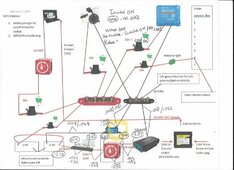tks...I'm a bit fuzzy what you mean by "Green should be moved"
You mean replace all the blade type fuses?
Yes the blade fuses should be replaced. Did not find an AIC rating for ATC etc.. They tolerate engine compartment temperatures. Fuses blow from overheating, and are self heating. At room temp it might take 60A to blow a 30A blade fuse. That fuse holder you show is typically 12AWG or less.
Victron has an internal LET fast blow fuse. So I put my Midi fuses near the buss bar. Sized 1.25 to 1.33 * the current. 6 AWG for Victron 100/50, 8 AWG for 100/30.
build notes:
Added Electrical
2 LiFePO4 mounted under sink, DIY 200AH and 280AH
1 200A Class T main fuse
1 60A Midi fuse, Yellow, 50A Victron Smart Solar controller for roof mounted
1 40A Midi fuse, Green, 30A Victron Smart Solar controller for ground placed
1 60A Circuit breaker for 250W inverter doubles as On/Off switch.
Notes: Inverter has on/off switch. 8AWG is largest it will take.
Add 12v power line filter (2200mf) to help with surges.
1 battery switch, isolates above from 12v system.
1 40A Midi fuse, Green, 12v Frig fuse, 12v system near ANL fuse
1 80A ANL fuse from battery to 12v system (converter).
1 Victron Smart Shunt on LiFePO4 ground line
AC breaker pair added. Converter wire moved there.



